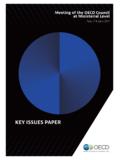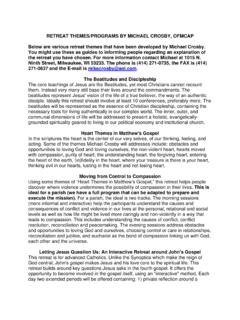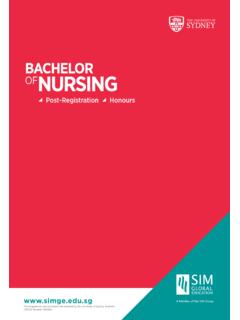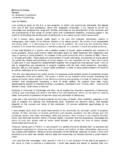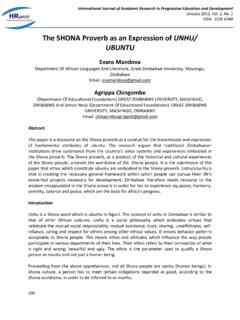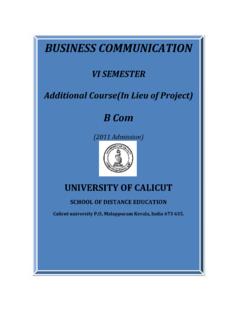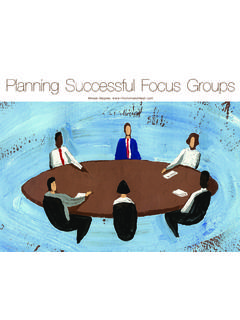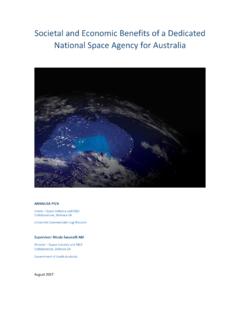Transcription of 6856-DfES-Teaching and Learning - UCL Institute of …
1 2020 Vision Report of the Teaching and Learning in 2020 Review Group1A VISION FOR TEACHING AND Learning IN 2020 ContentsLetter to Secretary of State3 Part 1: Teaching and Learning in 20205 Part 2: Realising the vision designing a new school experience13 Part 3: The Learning profession leading change29 Part 4: Closing the gap a system-wide focus on achievement for all37 Part 5: Conclusion41 Part6: Summary of recommendations43 Endnotes49 Annex A: Terms of reference51 Annex B: Sources analysing trends and future predictions for 202053 Annex C: Teaching and Learning in 2020 review group552A VISION FOR TEACHING AND Learning IN 2020 December 2006 Dear Secretary of State,I am pleased to present the report of the Teaching andLearning in 2020 Review Group which I was invited to leadearlier this were asked to establish a clear vision of what personalisedteaching and Learning might look like in our schools in identified this as a key educational priority; we agree thatthis is what every parent wants, what every child deserves andwhat the country needs if we are to meet the global challengesof the 21st century.
2 Personalising Learning means, in practical terms, focusing inamore structured way on each child s Learning in order toenhance progress, achievement and participation. All childrenand young people have the right to receive support andchallenge, tailored to their needs, interests and active commitment from pupils, responsivenessfrom teachers and engagement from parents. Many of the elements of personalising Learning set out in thisreport will be familiar, since they are at the heart of the verybest Learning and teaching. In practice, however, for mostschools, personalising Learning is likely to involve makingdistinctive changes to accelerate improvement and taken as a whole across the education system, in allschools, for allpupils, we think personalising Learning hasthe potential to transform key challenge for the Review Group was to consider howthe education system, not just individual schools, might enablelearning and teaching to meet pupils needs most action, locally and nationally, should reflect, supportand extend what is already happening in this area in someschools; as we have indicated, however, it needs to do morethan that.
3 Our recommendations therefore focus on what isneeded to effect systemic Group has drawn on three main sources of evidence:broad consultation and engagement with practitioners andstakeholders; visits to primary, secondary and special schools;and a wide body of knowledge relating to aspects ofpersonalising Learning . I should like to thank the many peopleand organisations who responded to our call for evidence,as well as those who contributed in other ways to our , too, our thanks to the Review s secretariat for itsexcellent support and, in particular, to Anna Paige, withoutwhose dedication and expertise this report would not havebeenproduced. Christine Gilberton behalf of the Teaching and Learning in 2020 Review Group3A VISION FOR TEACHING AND Learning IN 2020 Letter to Secretary of State4A VISION FOR TEACHING AND Learning IN 2020In 2020, the children who started in Reception classes inSeptember 2006 will be entering higher education oremployment. Fourteen years is one entire school new school leaders in 2020 are now in their early years ofteaching or still studying.
4 Many of the parents of the childrenwho will start primary education in 2020 are just coming to theendof their own their school years, children should grow from relativedependence on their parents and teachers into mature learners,with the skills to adapt to changing demands. Society saspirations for them are expressed in the outcomes of theEvery Child Matters framework: be healthy, stay safe, enjoy andachieve, make a positive contribution and achieve economicwell-being. Our vision is one in which these aspirations are realised for allchildren and young people. The education system will need toact now if it is to transform the experience of children startingschool today. We do not underestimate the challenges , we believe that the process of achieving our visionwill be an exciting one in which many schools are alreadyleading the way. Together, schools, local and national government need to worktowards a society in which:la child s chances of success are not related to his or hersocio-economic background, gender or ethnicity leducation services are designed around the needs of eachchild, with the expectation that all learners achieve highstandards lall children and young people leave school with functionalskills in English and mathematics, understanding how tolearn, think creatively, take risks and handle change lteachers use their skills and knowledge to engage childrenand young people as partners in Learning , acting quickly toadjust their teaching in response to pupils learning2lschools draw in parents as their child s co-educators,engaging them and increasing their capacity to support theirchild s Learning .
5 We believe that personalising Learning and teaching must playa central role in transforming England s education service toachieve these aims between now and VISION FOR TEACHING AND Learning IN 2020 PART 1 Teaching and Learning in Learning and teachingPut simply, personalising Learning and teaching means taking ahighly structured and responsive approach to each child s andyoung person s Learning , in order that all are able to progress,achieve and participate. It means strengthening the linkbetween Learning and teaching by engaging pupils and theirparents as partners in Learning . Some of the best schools and the best teachers are alreadydemonstrating what these aspirations mean in , for them to be achieved for allchildren and youngpeople, in allschools, allof the time, there will need to bechanges both to the way the education system operates and tothe practice of many teachers. Box 1 Personalising Learning and attention is paid to learners knowledge, skills,understanding and attitudes.
6 Learning is connected to whatthey already know (including from outside the classroom).Teaching enthuses pupils and engages their interest inlearning: it identifies, explores and corrects are active and curious: they create their ownhypotheses, ask their own questions, coach one another, setgoals for themselves, monitor their progress and experimentwith ideas for taking risks, knowing that mistakes and beingstuck are part of Learning . Work is sufficiently varied andchallenging to maintain their engagement but not so difficultas to discourage them. This engagement allows learners ofall abilities to succeed, and it avoids the disaffection andattention-seeking that give rise to problems with assessment-centredAssessment is both formative and summative and supportslearning: learners monitor their progress and, with theirteachers, identify their next steps. Techniques such as openquestioning, sharing Learning objectives and success criteria,and focused marking have a powerful effect on the extent towhich learners are enabled to take an active role in theirlearning.
7 Sufficient time is always given for learners individually or in pairs, they review what they havelearnt and how they have learnt it. Their evaluations contributeto their understanding. They know their levels of achievementand make progress towards their by How people learn: brain, mind, experienceand VISION FOR TEACHING AND Learning IN 2020 Why is personalisation soimportant now?Personalisation is a matter of moral purpose and social justice:pupils from the most disadvantaged groups are the least likelyto achieve well and participate in higher levels of education ortraining. Personalisation also reflects wider changes in society,which are likely to continue at an increasing rate. Together,these present the education system with its most acutechallenges. They mean that expectations of what all childrenand young people could and should achieve must be raised,along with schools capacity to ensure that outcomes for pupilsmatch those attainment gapsWe recognise the achievements of pupils, teachers, schoolsand government in raising overall standards over the last tenyears (as measured by national assessments at the end of KeyStages 1, 2 and 3 and by public examinations such as GCSE).
8 However, the country cannot accept a situation in which over20% of children leave primary school without a solid foundationin literacy and numeracy or one in which over 10% of 16 to 18year olds are not in education, employment or ,5 Itseems clear to us that the education system will not achievethe next step change in raising standards simply by doingmore of the same: a new approach is rich data now allow national and local government,as well as schools and individual teachers, to acknowledge thatthere are still too many children and young people who do notachieve or who fail to make good progress through primary andsecondary school. The over-representation of particular groupsof pupils amongst the lowest attainers results in attainment gaps .6 While some gaps have narrowed, for example, for black andminority ethnic pupils, others have proved to be extremelypersistent nationally. This is despite overall improvement in theattainment of all groups of pupils. For example, the difference inthe proportion of boys and girls achieving the expected levels inEnglish at the end of primary school has remained fairly staticsince 1999 and the gap in average attainment at Key Stage 2between pupils eligible and not eligible for free school mealshas not decreased international comparisons,while England ranks relatively highly for overall achievement, aconsiderable tail of underachievement is evident, most notablyin gaps persist in part simply because they are difficult torectify: the factors that contribute to them are complex andinter-related.
9 These include individual attitudes, beliefs andexpectations of pupils, parents and teachers. Closely linkedto these are deep-seated social challenges, such as urbanregeneration, economic development and migration. However,the gaps also persist because, for too many pupils, school doesnot engage them or equip them with the skills they VISION FOR TEACHING AND Learning IN 2020A changing worldThe world changes and England changes with it. The rate ofchange has been accelerating over recent decades and willprobably continue to do so (see Box 2).9In personalisinglearning, schools therefore need increasingly to respond to:lan ethnically and socially diverse society in which the gapsin achievement and prospects for people from differentsocial and ethnic backgrounds will not be allowed to persistlfar greater access to, and reliance on, technology as ameans of conducting daily interactions and transactionsla knowledge-based economy where it will be possible tocompete with developing and global markets only byoffering products and services of high quality, matchedclosely to customers needsldemanding employers, who are clear about the skills theirbusinesses need and valuelcomplex pathways through education and training, requiringyoung people to make choices and reach decisionsla sharper focus on sustainability, the role of individualswithin their communities, and their impact on challenges aheadAlthough there are detectable trends in English society,relatively few aspects of the future can be predicted withaccuracy and confidence.
10 Meeting the challenges both thoseoutlined here and those yet to come will place demands on allparts of the education system. Personalising Learning offersstructured ways to respond to these personalisation successfully to meet the Learning needs ofall children and young people so that they make good progress,it must face up to and reduce the persistent and unacceptablegaps in average attainment between different groups of sharp focus is needed on the essential knowledge, skills,understanding and attitudes which children and young peoplerequire in order to thrive in a changing world. Functional literacy and numeracy are vital: it has become almostimpossible to succeed without them. If pupils oral and literacyskills are not secure when they leave primary school, they willfind it very difficult to access the secondary curriculum. Withoutdecisive intervention, they are likely to lose confidence in theirabilities and their motivation to learn will decline. As boys tendto place a lower value on language and literacy than do girls,and tohave a lower opinion of their ability in this area, lowliteracy levels are likely to have a greater impact on subsequentattainment for boys than for VISION FOR TEACHING AND Learning IN 20209A VISION FOR TEACHING AND Learning IN 2020 Box 2 Drivers of change While it is not possible to predict the future with certainty, previous trends can be a guide to what is more likely to are five key drivers of change between now and :There will be more over-65s than under-16s in 2020, although, after a decline, the primary-age population willbe expanding.











